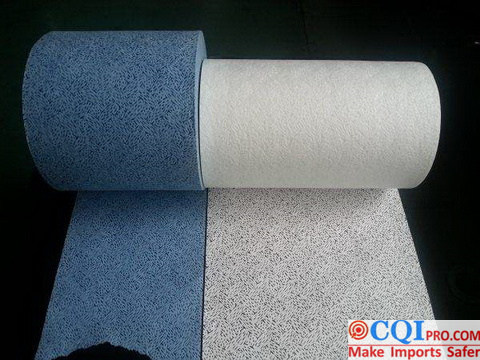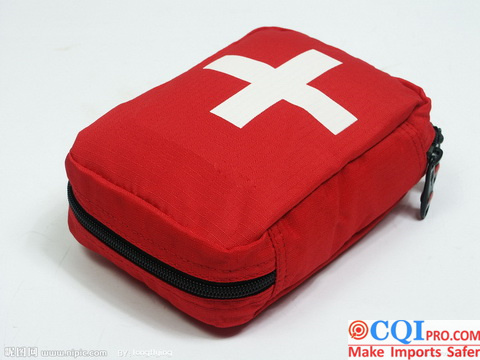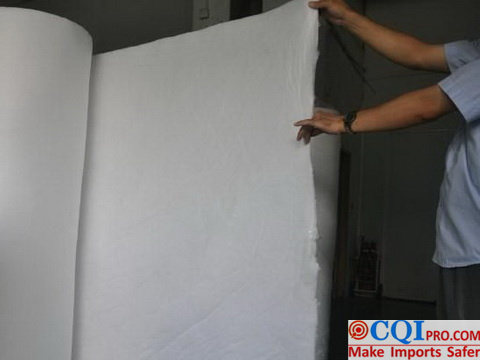Do You Know What the Purpose of Meltblown Fabric is?
Categories:● Voice Of Quality Quality Cases Quality Mirror
Tags:2729 application of meltblown fabric
By For Safer Imports • 07/20/2021 • No Comments
Meltblown fabric technology has developed rapidly, especially in recent years. With the rapid development of industry and the strengthening of environmental protection, application of meltblown fabric has become more and more extensive. The characteristics of ultra-fine fibers have been found and widely used in many industrial and civil fields. Because the fibers produced by melt-blown technology are very fine, and melt-blown fabrics have large surface gaps and small voids, its application characteristics such as filterability, shielding, thermal insulation and oil absorption are difficult to possess for nonwovens produced by other separate processes. The application of meltblown fabric is more and more widely used in medical and industrial masks, thermal insulation materials, filter materials, medical and sanitary materials, oil absorption materials, wiping cloths, battery separators, sound insulation materials and other fields.
As a medical and health material, meltblown cloth is the most basic and important use. Meltblown cloth is used to replace traditional textile products and spun-bonded nonwovens and is applied to mask cloth. It is characterized by high strength, good hand feeling, effectively preventing bacteria from penetrating, not permeable to blood but permeable to air. Can prevent cross infection, reduce the shedding of dust and hairiness, and provide the best operation environment; Reduce the labor of nursing staff and facilitate storage, supply and replacement; It is convenient to wear and use and has low price. Due to the above characteristics, a large number of bandages, first aid kits, operation cloths, delivery kits and the like have been made at home and abroad and applied to the medical industry, as well as sanitary fields such as sanitary napkins and diapers for women. Now all mankind is facing the threat of the coronal pneumonia epidemic, and as an indispensable core material for masks China meltblown fabric market is very large. In addition to the risks of influenza and other airborne diseases, many countries (especially developed countries) have taken meltblown cloth as their national reserves in order to take precautions and prevent it from happening.

In recent years, the application of meltblown cloth in clothing thermal insulation materials has become a hot research topic at home and abroad. Meltblown cloth is the best material for thermal insulation clothing because of its extremely small fiber diameter, small pore diameter, high porosity, soft hand feeling, very good wind resistance, good air permeability and very light weight. At present, it has been widely used and the market growth rate is fast. Tested by national inspection unit, meltblown cloth has the best thermal insulation effect among the clothing thermal insulation materials with the same weight. Tianjin TEDA took the lead in developing thermal insulation materials made of meltblown cloth, thus bringing the climax of the development of meltblown cloth in China. 3M Company of the United States developed a special meltblown cloth. PET staple fibers were mixed into the meltblown fiber forming process to form an air thermal insulation structure composed of PET staple fibers with good elasticity and PP superfine fibers. The thermal insulation wadding produced by melt-blown nonwoven and three-dimensional crimped fibers not only has good thermal insulation effect, but also has very good elasticity and fluffy performance.

Benefit from the ultra-fine fiber structure of meltblown cloth, its application in filter materials is outstanding. The demand for new filter materials is also the main driving force to promote the development of meltblown cloth. The fiber diameter of meltblown cloth can reach 1~2cm, and the arrangement is randomly distributed, with a certain degree of clutter. This structure makes it have larger specific surface area and smaller pore diameter, and can be used to produce very high-quality filter materials, which are mainly used in many fields such as air filtration, water filtration, oil filtration, oil-water separation, etc. Meltblown cloth is used for filtration, and the purified gas or liquid has no lint phenomenon that the filter material falls off. If it is treated by static electret, its effect is better as filter material.
At present, more than 20,000 tons of meltblown filter materials are used in the world every year, of which 65% are used for liquid filtration, such as beverage and food hygiene filtration, water filtration, precious metal recovery filtration, paint and paint filtration, etc. 35% is used for gas filtration, such as indoor air conditioner filtration, gas-water separation filtration, purification room filtration, etc. And China’s meltblown fabric industry is affected by the COVID-19 situation and will be constantly changing in 2020. The market is chaotic. Presumably, most of this year’s meltblown cloth will be used in medical and health products, and the usage in other industries will be greatly reduced.
PP meltblown nonwovens have hydrophobic and oleophilic characteristics, are resistant to strong acid and alkali, have a density smaller than water, can float on the water surface for a long time without deformation after oil absorption, and can be recycled and stored for a long time. Generally, meltblown cloth is inserted into a long mesh tube knitted from PET filaments as a floating water grid for oil resistance and oil absorption at sea. It is also possible to install an oil collecting device made of PP meltblown cloth on the head of an offshore tugboat to continuously remove oil stains on the sea surface. PP meltblown cloth is made into oil absorption cable, oil absorption chain, oil conservator, etc. The oil absorption amount can reach 10-50 times of its own weight. The use of meltblown cloth as an oil absorbing material greatly improves the efficiency of offshore oil absorption.
The application of meltblown fabric makes use of PP’s natural oil absorption to make various wipes for oil-contaminated working environment. PP meltblown wipes with hydrophilicity can be made by using appropriate humidification additives, and can be used as advanced wipes in hospitals, high purification rooms, precision parts, instruments, computer rooms, etc.
Meltblown bicomponent sound absorbing material is a nonwoven material composed of meltblown superfine fibers with a diameter of 1-4μm and short fibers with a diameter of 3-7dtex. When the sound wave vibrates through the fiber pores in the meltblown bicomponent material, under the action of friction loss and the like, the energy of the passing sound is converted into heat energy, thereby achieving the effects of sound insulation and sound absorption. The application of meltblown fabric has broad prospects.

This article is an original article for CQI Inspection, who is committed to providing high-quality product inspection technology and know-how sharing for global importers and retailers to make imports safer.
All rights reserved. The contents of this website provided by CQI Inspection may not be reproduced or used without express permission.
For reprint, please contact with CQI Inspection, thank you.
2543 2607 2659 2667 2676 2682 2683 2685 2687 2692 2693 2699 2700 2705 2708 2714 2715 2716 2743 2744 2746 2748 backpack defect check Children furniture quality control China disposable medical gloves Electric toothbrush cost Electric toothbrush inspection Electric toothbrush waterproof inspection Electronic scale quality inspection Glove testing consultation infrared thermometer testing consultation Lighter inspection Lighter process inspection Mask inspection nitrile gloves inspection Pajamas process inspection Plastic clip quality check Quartz watch inspection Quartz watch process inspection Sofa bed inspection solid flooring inspection stainless steel quality control Umbrella process inspection Wenzhou shoes inspection Zhangzhou watch inspection